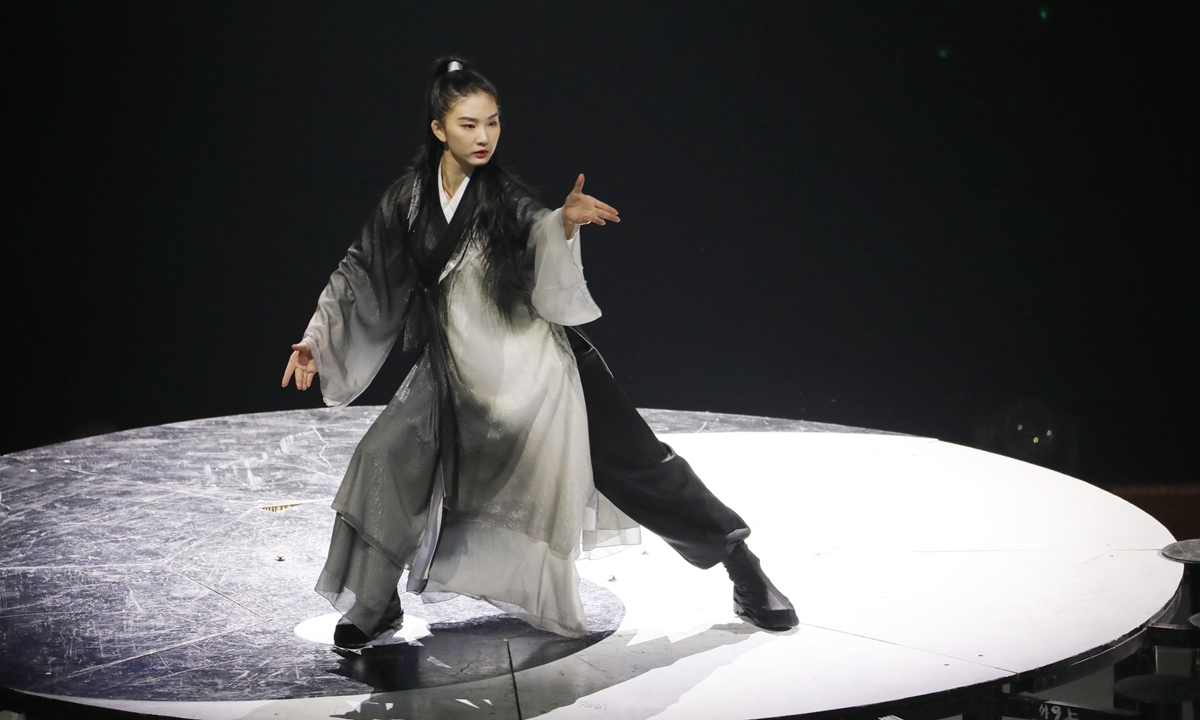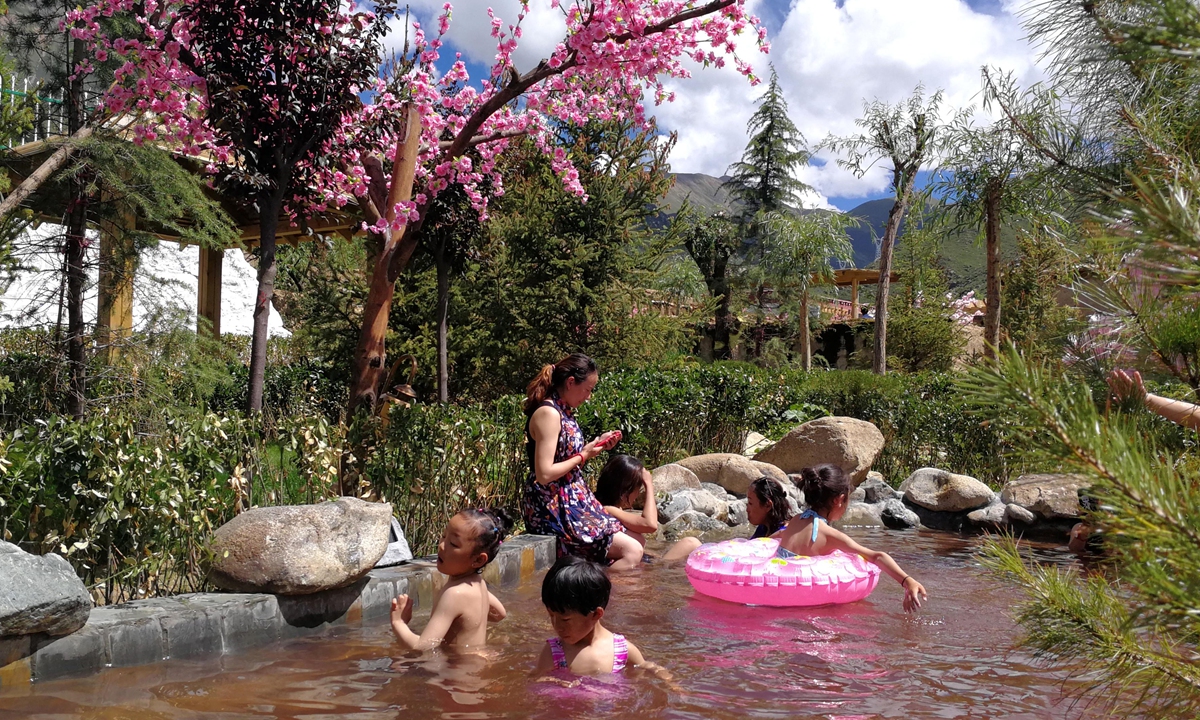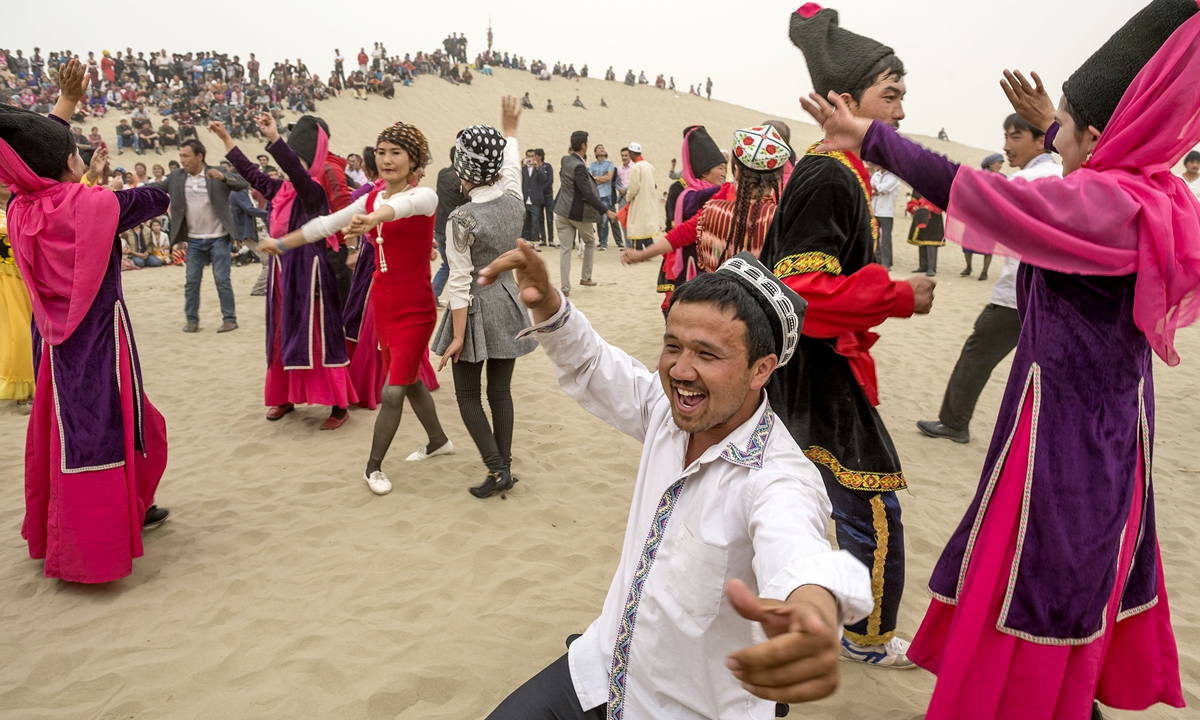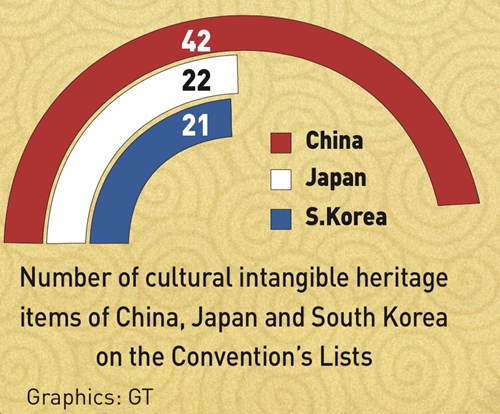How China became No.1 in World Intangible Cultural Heritage
By Ji Yuqiao, Dong Feng and Li Yuche Source: Global Times Published: 2020/12/21 21:35:39

A Peking Opera performance in Beijing on March 25, 2017 Photo: VCG
Editor's Note:
Be it folk literature, traditional music and dance, medicine or painting, China, an ancient nation with 5,000 years of history, now has a total of 42 intangible cultural heritage after Tai Chi and the Wangchuan Ceremony were inscribed to the UNESCO list of Intangible Cultural Heritage on Thursday.
As protection of intangible cultural heritage is the task for all of humanity, China joined the Convention for the Safeguarding of the Intangible Cultural Heritage in 2004.
From 2005 to 2009, China carried out its first nationwide census of intangible cultural heritage, counting nearly 870,000 intangible cultural heritage resources, once again demonstrating the depth and width of the country's profound history.
Ta Chi
Inscribed in 2020
Tai Chi, or taijiquan, is a traditional physical exercise in China that aims to bring the practicer health of body and peace of mind through its signature slow circular movements. Originating in Central China's Henan Province during the mid-17th century, it is now practiced by a wide range of people across various ages and ethnic groups throughout the country.

A woman practices Tai Chi in Central China's Henan Province. Photo: IC
Wangchuan Ceremony
Inscribed in 2020
The Wangchuan Ceremony and its related practices originated with folk customs paying homage to a "sea god" who protects people and their lands. The application of the Wangchuan Ceremony is the first time that China has jointly applied for Intangible Cultural Heritage status with another country along the Maritime Silk Road - Malaysia.

Part of the traditional Wangchuan Ceremony in Fujian Province Photo: IC
Lum medicinal bathing of Sowa Rigpa
Inscribed in 2018
Lum medicinal bathing of Sowa Rigpa is a practice developed by the Tibetan people based on folk experiences in illness prevention and treatments. Practitioners include farmers, herdsmen and urban residents in Tibetan-inhabited areas.

Lhasa citizens take a Tibetan medicinal bath in Lhasa. Photo: VCG
Acupuncture and moxibustion of traditional Chinese medicine
Inscribed in 2010
Acupuncture and moxibustion are forms of traditional Chinese medicine commonly practiced in China. In acupuncture, needles are applied to puncture and stimulate chosen points on one's body. For moxibustion, moxa cones are often placed on the skin to warm the chosen area.

A practitioner treats a patient with acupuncture needles. Photo: IC
Meshrep
Inscribed in 2010
Practiced among the Uygur people concentrated largely in Northwest China's Xinjiang Uygur Autonomous Region, Meshrep constitutes the most important cultural carrier of Uygur tradition. A complete Meshrep event includes a rich collection of traditions and performance arts, such as music, dance, drama, folk arts, acrobatics, oral literature, food and games. Uygur muqam is the most comprehensive tradition included in the event, integrating song, dance and entertainment.

Tourists dance during a Meshrep festival in Xinjiang. Photo: VCG
Conservation challenges
China has made huge contributions to the protection of intangible cultural heritage around the world since joining the Convention for the Safeguarding of the Intangible Cultural Heritage. Chinese government agencies, enterprises and communities have focused more on the discovery and conservation of intangible cultural heritage and more inheritors have appeared.
However, conservation work still faces challenges. Zhang Yiwu, a professor at Peking University, told the Global Times that these intangible cultural heritage need to be put into practice to remain vital.
"These intangible cultural heritages have some commercial value that are waiting to be developed. Cultural products related to them can serve society, which is also good for conservation," Zhang said.
He added that authorities should strengthen discovery and rescue efforts, as well as do more to introduce their cultural value to the public.

Graphics: GT
Newspaper headline: A long history
Posted in: CULTURE & LEISURE